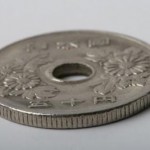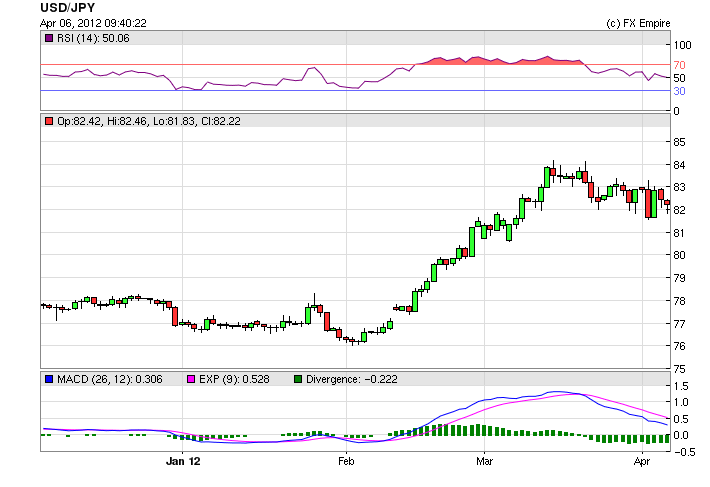By FXEmpire.com

USD/JPY Monthly Fundamental Forecast April 2012
Outlook and Recommendation
The first few months of 2012 have been marked by a risk rally, where equities and commodities have been strong and the US dollar (USD) has weakened materially. The foundation for this was laid by G4 central bank policy that has succeeded in decreasing much of the tail risk than hung over markets in 2011. Developments in Europe continue to be a key concern; however, markets have rewarded the euro (EUR) as several important hurdles have been passed. The yen was the weakest of the major currencies in Q1, losing about 7.2% against the dollar.
There was a clear shift in both speculative and portfolio flows. The net speculative position in the IMM futures shows a swing from near the largest long position in a decade to the largest net short position since the onset of the financial crisis. In terms of portfolio flows, Japanese investors have stepped up their purchases of foreign assets compared to a year ago, while foreign investors have been net sellers of Japanese stocks and bonds in the first 13 weeks of the year, but were net buyers in the same year ago period.
This does not include the fact in the last week in March, foreign investors sold JPY3.48 trillion worth of Japanese bills, which is the most since the time series began in 2005. The sale of the bills could be related to other financial transactions, but it also may be a capitulation of yen bulls at the end of Q1. At times, fixed income managers who may be barred from taking naked currency position, express a bullish yen view through buying Japanese bills.
After depreciating materially in February, the yen settled into a range in March. Investors are increasingly bearish, with the CFTC highlighting a significant build in the net short position. The natural disaster induced shift in the energy related trade balance and dovish change in Bank of Japan policy have now been priced into USDJPY. We have made a slight shift to our forecast, expecting USDJPY to close Q2 at 82.
The BoJ’s asset buying expansion in February –accompanied by the explicit adoption of an inflation “goal”– led to 7.5% depreciation of the Japanese yen (JPY) against the US dollar over the following month. After orchestrating this weakening of the JPY through a significant expansion of its bond-buying program, clear statements of an inflationary goal and unilateral foreign exchange market intervention, we expect the BoJ to remain in wait-and-see mode for now. Despite the rebound in the JPY, encouraging recent indicators of Japan’s economic performance support our view. Looking ahead, we continue to anticipate that the Japanese economy will be a key beneficiary of a rebound in economic activity within Asia towards the middle of the year. We expect GDP to expand at a 2.2% y/y rate in 2012 after last year’s 0.9% contraction.
We see the USD/JPY trading within the 82.00-82.90 range during April.
For March the pair trading in the range shown below:

Central Bank
The Bank of Japan –BOJ INTEREST RATE DECISION
Cons.: 0.1%Previous: 0.1%
BoJ Interest Rate Decision is announced by the Bank of Japan. Generally, if the BoJ is hawkish about the inflationary outlook of the economy and rises the interest rates it is positive, or bullish, for the JPY. Likewise, if the BoJ has a dovish view on the Japanese economy and keeps the ongoing interest rate, or cuts the interest rate it is negative, or bearish.
FED INTEREST RATE DECISION
Previous: 0.25%
The Board of Governors of the Federal Reserve announces an interest rate. This interest rate affects the whole range of interest rates set by commercial banks, building societies and other institutions for their own savers and borrowers. It also tends to affect the exchange rate. Generally speaking, if the Fed is hawkish about the inflationary outlook of the economy and rises the interest rates it is positive, or bullish, for the USD.
Originally posted here



